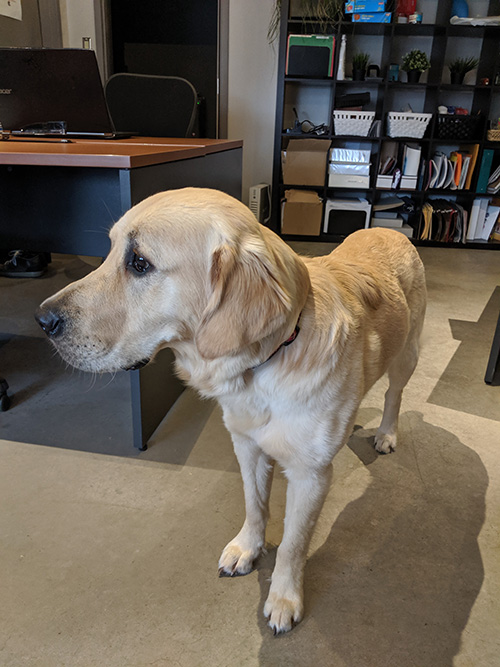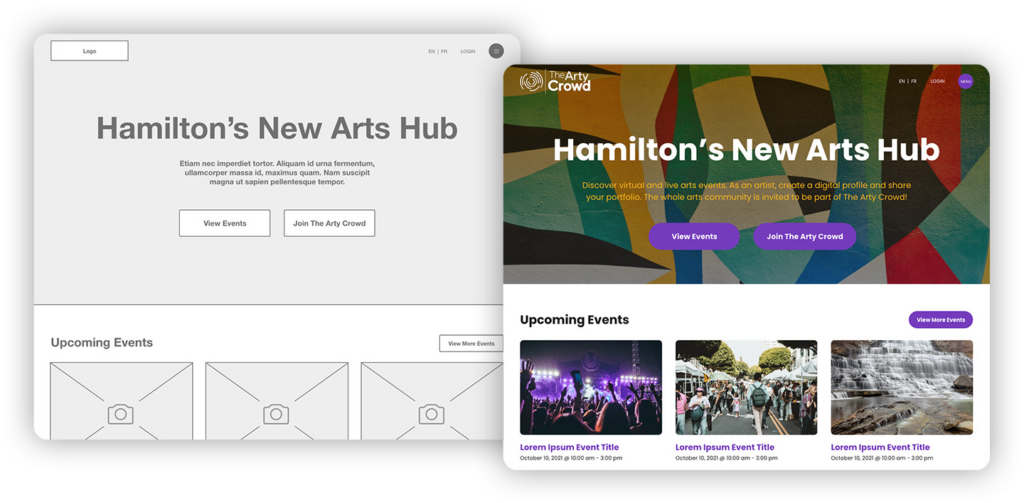Whether you’re looking to reach new audiences, launch a new product or take some market share from your competitors, there IS an agency out there for you! Finding the right marketing partner for your business can be a daunting task. You might be wondering:
- Can they deliver on their promises?
- How much is it going to cost?
- Do I have the time to manage all of this?
We’re here to help! Keep reading for our tips and tricks on finding the right agency for you, what to expect from the relationship and even how to decide between working with an agency or hiring internally.
What is a Marketing Agency?
A marketing agency is a company that serves clients by creating, implementing and sustaining marketing strategies across a variety of channels. There are many types of agencies, each with its own unique experience and areas of focus. Some agencies may specialize in one kind of service, such as public relations, social media or web design. Others may focus on specific industries like healthcare or food and beverage. Agencies can also vary in size, from one-person operations to large multinational firms.
Working with an agency vs hiring internally
When deciding between working with an external agency or hiring an internal marketing team, it’s important to know the difference between the two and what they can do for your business.
An internal marketing person or team knows the ins and outs of the business and can prioritize tasks accordingly. They can focus more energy on the work because they aren’t juggling multiple clients. In-house teams are also immersed in the company culture, which an agency can learn in time and is invaluable for consistent brand messaging. However, even a very dedicated in-house marketing person may eventually wear many hats and, as a result, may not have time for the continued education and in-depth analysis required to refine your strategy and continuously grow marketing efforts.
Reaching the right person with the right message at the right time has become increasingly complex. The best programs use in-depth research and data analysis to market to multiple platforms and mediums. That said, it's a lot for one person or small teams to manage, and no one can be an expert in everything. These limitations may leave in-house teams hesitant to try new tactics or sink their teeth into the latest tools, which means you could miss out on opportunities to grow your business. While an external agency may present an additional cost for your business, it comes with the additional expertise, increased capacity for marketing efforts and access to powerful tools and insights that can catalyze business growth.
The benefits of collective experience
One of the most significant benefits of hiring an agency is the level of expertise and collective experience you gain access to. A good agency brings together individual experts, all with distinct disciplines, unique experiences and education. These individuals can dive deeper into their field and generate better results than a generalist, resulting in greater returns for your business. Collectively, especially if the agency you’re considering has been around for a while, they’ll also have experience with strategies, tactics, and challenges for businesses like yours.
Cost savings, really?
Yes! We know hiring an agency means another invoice but bear with us. Remember all those experts we mentioned above? They’re Web Developers, Graphic Designers, SEO Specialists, Social Media Experts, Photographers and Videographers, and of course, Marketing Specialists and Coordinators. Finding and retaining quality people in even one of these roles is challenging and expensive. An agency brings all of them, for the same cost of about one of those salaries.
When it comes to execution, all the experience an agency brings means they know which tactics will provide the best ROI and have access to the data to back that up. For example, an experienced digital specialist can spot opportunities to save on ad costs sooner than a marketing generalist might be able to.
Expand your efforts
Even if you already have an internal marketing team, hiring an agency is a great way to expand your capacity and resources. The right agency collaborates with your internal teams to deliver more creative solutions, deeper insights and results on a larger scale.
Keep it fresh
Good agencies are results-driven. They’re expert problem solvers and will always seek ways to drive the best outcomes for your business. This laser focus on measurable goals helps you evaluate the agency relationship and investment over time. The depth of experience and variety of perspectives under one roof also creates an environment where fresh ideas and innovation can thrive, so your marketing won’t go stale.
Can it be both?
Yes! Hiring an in-house marketing coordinator, for example, and an agency is not uncommon. We recommend it for some businesses as they scale. Communicating with your marketing agency shouldn’t overwhelm your day-to-day, but it does require a time commitment. As you grow, a marketing coordinator can oversee the day-to-day with the agency and help speed up the approvals and feedback cycle. At the same time, you can focus on your overall vision and running your business .
What should I look for when choosing an agency?
Marketing moves fast. Trends and technologies change at lightning speed, and an algorithm or platform update can bump you to the bottom of the results page overnight. With so many factors to consider, it can be challenging to know where to begin. The type of agency you select will depend on the goals you’re trying to accomplish. Think about your business or project needs, being as specific as possible.
- What led you to want to make a change now?
- What is your top priority?
- What have you done so far to address your challenges?
- What does your ideal solution look like?
- What would solving your challenge do for your business?
Keeping your answers to these questions in mind will help you evaluate which agencies might be the right fit for your needs. It’s also important to consider your budget. Pricing between agencies may vary and is usually based on the services they provide and the kinds of clients they serve. You’ll likely have to ask about pricing by speaking to one of the sales team, but this interaction can be valuable too. Look for an agency that is transparent about its costs and how they’re structured.
Next, review their portfolio of work. Most agencies will have an online portfolio to browse. Through your discovery process with a sales team, they should include other examples or case studies relevant to your business or project needs. Considering their work, does it look like they can handle your project or brand needs?
Finally, seek a second opinion. Or third, or fourth….you get it. Check out online reviews and reach out through your networks for a word-of-mouth recommendation. You can even ask your prospective agency if they can provide some references.
Asking the right questions is vital when looking for a marketing agency. Sourcing and interviewing the right agency for your business may take some time, but the results are well worth it. The extra capacity and the right team of marketing experts in your corner can help you scale your business more efficiently than going at it alone. So, if you're ready to make a move, reach out to Thinkr today for a quick discovery session and put everything you’ve learned to work! In the meantime, download our guide of top questions to ask when interviewing potential marketing agencies and red flags to watch out for!



